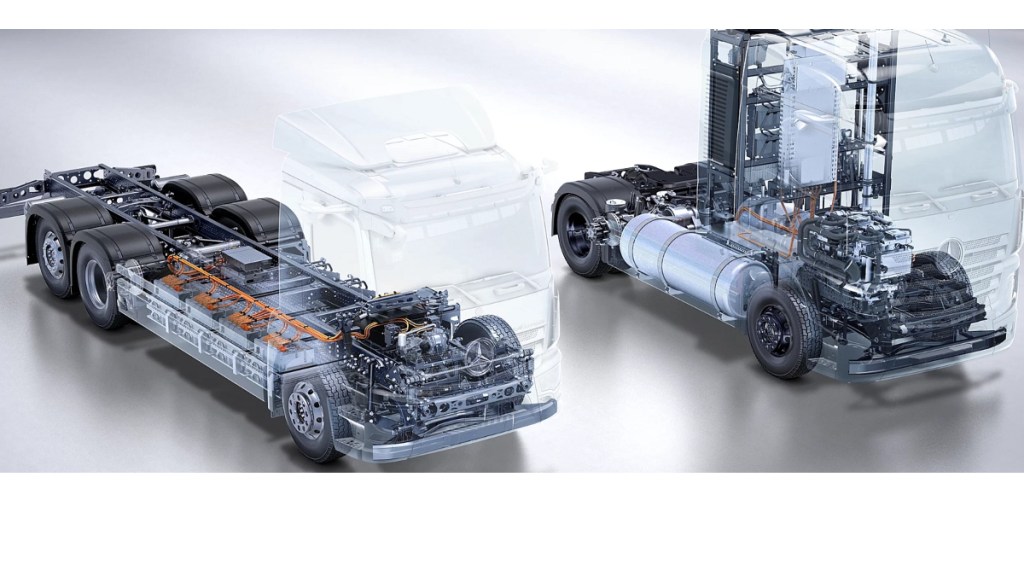By Raghavendra Vaidya
India’s automobile industry is on a mission to reinvent itself for sustainability. While the sector is a vital contributor to the country’s economic growth, it also produces substantial levels of environmental pollution.
Developing automotive products with zero emissions has risen to become a big aspiration or the golden standard, for almost all companies. This is not just a priority from a corporate responsibility perspective but will become a demand from increasingly climate-conscious buyers. Policies are also being amended around the world to come down hard on supply chain or ‘value chain’ emissions, which are known to be significant contributors to environmental pollution. Today, climate-conscious companies are increasingly attracting top talent and are being seen by investors and shareholders as safer bets.
But the green transition in India’s automobile industry is not without its challenges, especially when it comes to commercial vehicles (CVs). Two key challenges to overcome in the electrification of CVs are:
1) the longer distances that CVs travel compared to passenger vehicles carrying heavy payloads, which puts extra pressure on energy consumption and hence creates range anxiety.
2) Charging infrastructure across length and breadth of our vast nation.
Overcoming these challenges within our CVs is critical and will pay off for generations to come. India’s automobile industry is headed in the direction that it should be – by embracing eco-friendly measures and focusing on technology-based solutions, the industry can reduce carbon emissions, conserve resources, and contribute to a cleaner and healthier future. In fact, when we look at India’s investments into green energy coupled with the innovation potential of our talent ecosystem, India has the power to surprise the world with its progress towards zero emissions.
The auto industry should take the following steps to make our CVs green:
- Embracing Electric Vehicles (EVs): Electric CVs produce zero tailpipe emissions, resulting in significant reductions in greenhouse gas emissions. The government’s focus on promoting EV adoption through incentives and subsidies has laid a solid foundation for the industry to transition toward electric mobility. CV manufacturers should invest in research and development to improve the range and performance of electric CVs while making them more affordable. To really succeed, we will need to look at a robust charging infrastructure across the country to alleviate range anxiety and encourage wider adoption of electric CVs.
- Embracing Hydrogen-powered vehicles: Hydrogen will play a key role in de-carbonising the world. We need to invest in both fuel cell and H2ICE technologies. Along with this, the ability to produce and distribute green Hydrogen will determine the success of this technology at scale. Hydrogen along with battery electric will be the scalable solution for de-carbonisation for the future.
- Promoting Hybrid Technology: Hybrid technology can be a practical and transitional solution for the Indian CV industry. Hybrid CVs combine the benefits of electric and internal combustion engine technologies, reducing fuel consumption and emissions. By integrating regenerative braking, start-stop systems, and advanced battery technology, hybrid CVs can optimise fuel efficiency and reduce environmental impact. Government incentives and tax breaks can encourage manufacturers to invest in hybrid CV production and create a market for these vehicles.
- Adopting Sustainable Fuel Alternatives: Exploring sustainable fuel alternatives is another vital step towards greening the Indian CV industry. Biofuels such as biodiesel, ethanol, and biogas can be produced from organic waste and agricultural residues, offering a renewable and low-carbon alternative to conventional fossil fuels. Government policies and incentives can promote the production and distribution of biofuels, encouraging CV manufacturers and fleet operators to transition to these sustainable fuel options. More investments in research and development will help to explore alternative fuels such as hydrogen and compressed natural gas (CNG), which have the potential to significantly reduce emissions.
- Implementing Efficient Logistics and Route Planning: Employing advanced technologies such as telematics and route optimisation software can help streamline operations, minimise idle time, and reduce the number of miles travelled. This not only saves fuel costs but also decreases carbon emissions. Promoting multimodal transportation, where feasible, can reduce the number of vehicles on the road and improve overall efficiency. Collaboration among manufacturers, fleet operators, and logistics companies is essential to implement these practices effectively and achieve significant environmental benefits.
The seeds we plant today are the fruits we will reap tomorrow. The Indian CV industry has a unique opportunity to embrace sustainability and lead the transition towards a greener future. By adopting electric and hybrid vehicles, exploring sustainable fuel alternatives, and implementing efficient logistics and route planning, the industry can significantly reduce its carbon footprint while contributing to a healthier planet for our future generations.
The author is MD & CEO, Daimler Truck Innovation Center India.
Disclaimer: Views expressed are personal and do not reflect the official position or policy of Financial Express Online. Reproducing this content without permission is prohibited.



















